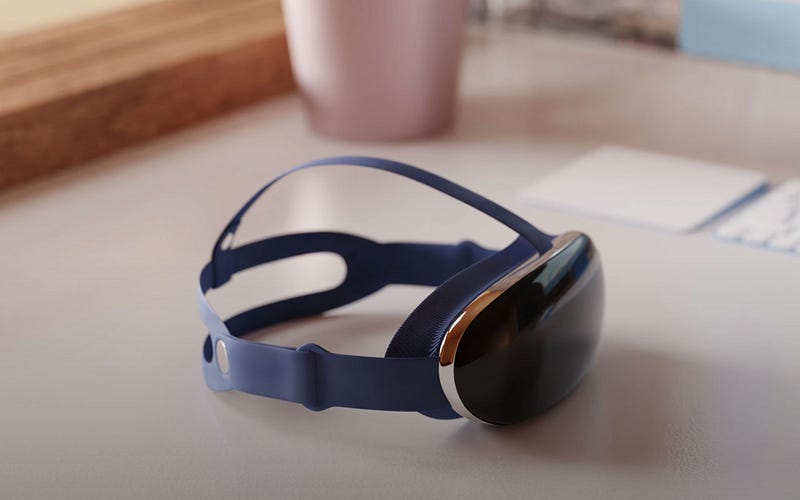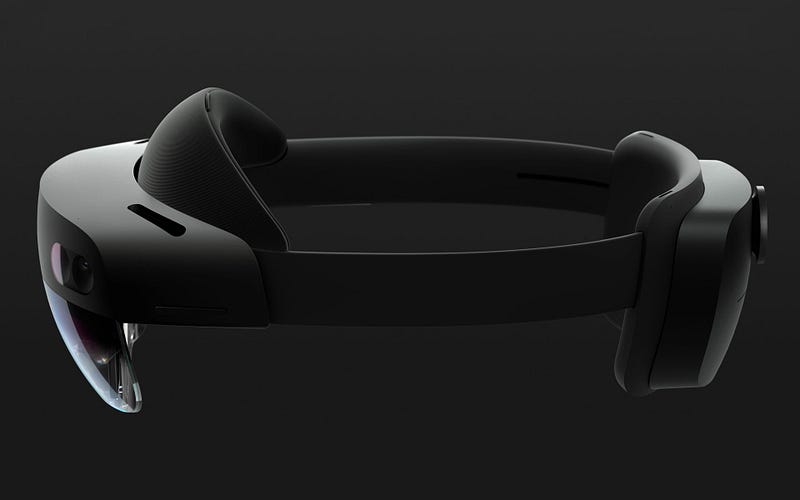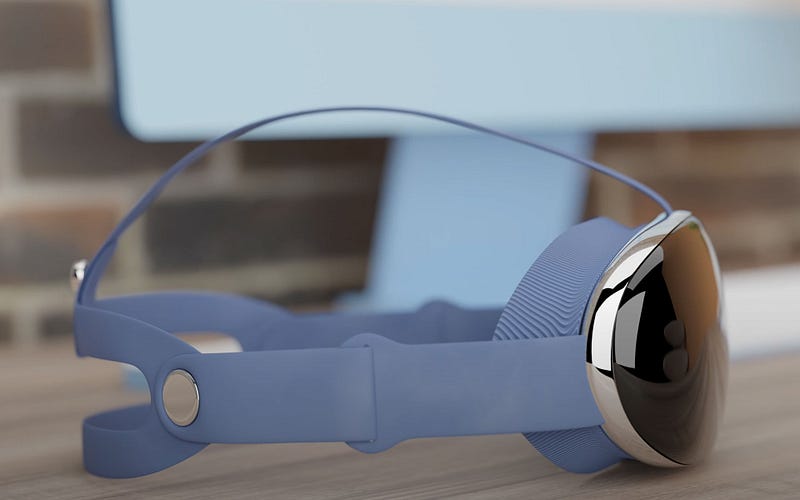A Critical Look at Apple's Approach to Reality Headsets
Written on
Chapter 1: Apple’s Ambitious Reality Headset Plans
The debut of the Apple Reality AR/VR headset is just a few months away, but does the company's strategy align with its aspirations and future relevance? (Image: Apple Insider, YouTube)
As Apple seeks to diversify its product offerings to ensure sustained profitability, it’s clear that reliance on the iPhone, services, and sporadic success in the personal computer sector won't suffice. While we can only speculate on what Steve Jobs would have done in this situation, Tim Cook and his team appear to be making the decision to venture into the AR/VR market with their first product slated for 2023.
The main issue: the execution seems flawed.
Mark Gurman from Bloomberg, a reliable source on Apple's developments, is now convinced that the company will introduce its first AR/VR device during WWDC in June. Other sources within the company have also hinted that this product will be cutting-edge yet exorbitantly priced at $3,000, far beyond the reach of most consumers.

The inaugural Apple AR/VR headset is anticipated to be named Reality Pro, showcasing advancements over current consumer offerings. (Image: Apple Insider, YouTube)
The rationale behind this pricing strategy appears to be targeting developers: Apple’s initial app offerings may not suffice to make this headset an irresistible purchase. Thus, they expect developers to buy enough units to justify its production and subsequently create apps that would entice consumers into purchasing a more affordable version later on. This echoes a cautionary tale from Microsoft's HoloLens.
Does this sound familiar? Indeed, this mirrors Microsoft’s strategy with the HoloLens and HoloLens 2, which struggled from 2016 to 2021. While they appeared promising and futuristic, they faced numerous initial challenges that were only somewhat remedied through software updates, ultimately aiming at enterprise clients.

Microsoft's HoloLens was arguably ahead of its time, but its execution led to its downfall. (Image: Microsoft)
Microsoft learned the hard way that restricting headset access to developers resulted in a slow evolution of both products, diminishing incentives for app creation. The pitch of HoloLens 2 as a next-generation interface for enterprises also faltered due to steep implementation costs. Despite securing a lucrative contract with the US Army in 2021, the focus on military applications failed to sustain the HoloLens initiative over the long haul.
This past month, Microsoft laid off over 10,000 employees globally, effectively dismantling most of its Mixed Reality teams, indicating a waning interest in the “Metaverse” sector. It might be quite some time before the company invests heavily in this arena again.
Chapter 2: Apple’s Potential Pitfalls in AR/VR
What Makes The $3000 Apple VR Headsets Special
In this video, we explore the features of the upcoming Apple VR headset and discuss its implications for the AR/VR market.
The Apple Vision Pro is NOT what you think it is
This video critiques the Apple Vision Pro, challenging common assumptions and highlighting potential issues with Apple's approach.
Apple might be stepping into a similar trap. Launching an overpriced AR/VR headset in limited quantities, primarily for developers, could spell trouble. While Apple may initially generate buzz and make a strong impression, the reality is that their loyal developer ecosystem might not be enough to ensure widespread app development for the device.
The flaw in Apple’s logic mirrors that of Microsoft: Tim Cook and his leadership team seem to believe they can manipulate consumer demand to their favor. They appear to be banking on the notion that they can launch a premium product at a steep price, allowing only a small number of early adopters, and then take their time developing software and services before delivering a more affordable option that consumers would actually want.

If Apple intends to "beta-launch" the Reality Pro, history suggests that the chances of success are minimal. (Image: Apple Insider, YouTube)
This strategy is overly ambitious and makes several assumptions. Who is to say that the media will remain interested while Apple develops an AR/VR ecosystem? Will they not lose interest, as they did with the HoloLens? Moreover, when an affordable Reality device finally arrives, will its essential apps be refined and sought after? And will consumers still be intrigued by AR and VR when that time comes?
Consumer interest in AR and VR seems to be waning, and it’s worth noting that the initial excitement around these technologies has dwindled. A few years ago, AR and VR were seen as promising new frontiers; however, many tech enthusiasts and consumers alike have grown disillusioned with the concept of the Metaverse.
For any company, including Apple, to successfully "beta-launch" an AR/VR product and request additional time to refine it before offering something affordable seems unrealistic.
A Call for Bold Moves
Considering all the factors, it’s evident that launching an AR/VR product in 2023 will be a significant undertaking. Apple needs to embrace this challenge fully rather than pursuing a half-hearted effort that many anticipate will fail. In the realm of emerging technology, particularly for a company of Apple’s stature, it’s often a matter of “go big or go home.”
Apple could easily become another cautionary tale like the HoloLens if it doesn’t adapt its strategy.
If Apple intends to stake its future on this product, similar to how it did 15 years ago with the iPhone and App Store, it must recognize that achieving a similar feat today will require a considerable investment.
What should Apple do? It’s straightforward. To successfully launch a high-end AR/VR product in 2023, it must price it at a level that appeals to early adopters beyond just developers. Instead of anticipating significant profits, Apple should consider selling the headset at $1,500, even if it means taking a loss on each unit. Building a new ecosystem under less-than-ideal conditions comes at a cost.
To establish a robust user base that developers can engage with, the Reality Pro should be made accessible to as many consumers as quickly as possible. Apple could always introduce a Reality Plus or Reality Ultra model later, as the app ecosystem matures. But for now, the focus should be on making a strong market entry. If there’s any company capable of taking such a risk, it’s Apple.